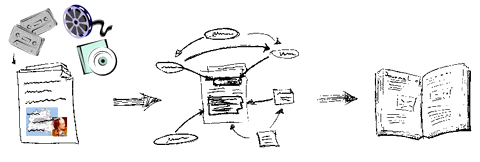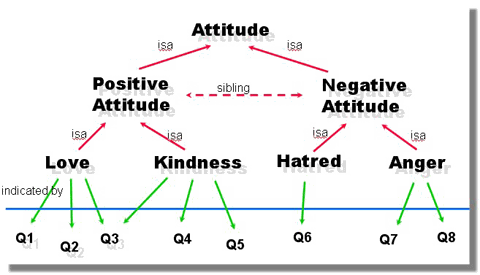|
|
ATLAS.ti is a versatile workbench for the qualitative analysis of large bodies of textual, graphical, audio, and video data. It offers a variety of tools for accomplishing the tasks associated with any systematic approach to unstructured data, e.g., data that cannot be meaningfully analyzed by formal, statistical approaches.
In the course of qualitative analysis, ATLAS.ti helps you to explore the complex phenomena hidden in your textual and multimedia data. For coping with the inherent complexity of the tasks and data, ATLAS.ti offers a powerful, intuitive environment that keeps you focused on the materials to be analyzed.
It offers sophisticated tools to manage, extract, compare, explore, and reassemble meaningful segments of large amounts of data in flexible and creative, yet systematic ways.
Learn more about some of central concepts and features of ATLAS.ti:
There are two principal modes of working with ATLAS.ti, the Textual Level and the Conceptual Level.
- The textual level includes activities like segmentation of data files; coding text, image, audio, and video passages; and writing memos.
- The conceptual level focuses on model-building activities such as linking codes to networks.
A third and equally important aspect is the management of projects and the data.
Textual-Level Work
Textual-level research activities include segmenting PDs into quotations, adding comments to respective passages (note-making/annotating), and coding selected PD passages, secondary text materials, annotations, and memos to facilitate their retrieval. The act of comparing noteworthy segments leads to a creative conceptualization phase that involves higher-level interpretive work and theory-building.
Text - Structure - Text - the overall process of text interpretation with ATLAS.ti proceeds from text to structure to text:

ATLAS.ti assists you in all of these tasks and provides a comprehensive overview of your work as well as rapid search, retrieval, and browsing functions.
Within ATLAS.ti, initial ideas often find expression through their assignment to a code or memo, to which similar ideas or text selections also become assigned. ATLAS.ti provides the researcher with a highly effective means for quickly retrieving all data selections and notes relevant to one idea.
Conceptual Level Work
Beyond coding and retrieval, ATLAS.ti's networking feature allows you to visually "connect" selected passages, memos, and codes into diagrams that graphically outline complex relations.

This feature virtually transforms your text-based workspace into a graphical "playground" where you can construct concepts and theories based on relationships between codes, text passages, or memos. This process sometimes uncovers other relations in the data that were not obvious before and still allows you the ability to instantly revert to your notes or primary text selection. Such textual/conceptual modeling is unique to ATLAS.ti.